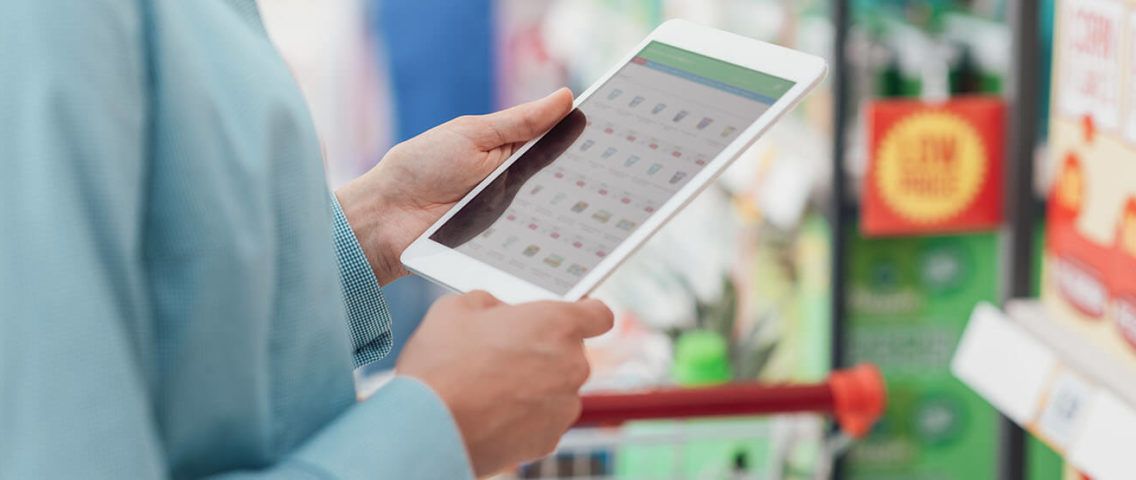Frictionless retail and the new grocery supply chain
Jun 12, 2019 • 3 min
The term “frictionless retail” sometimes feels as though it changes meaning from conversation to conversation. Depending on context, it might refer to blockchain technology, the internet of things, click-and-collect services, home delivery services, ready-made foods or checkout-free online or brick-and-mortar stores. It may mean all of those elements—and more—combined.
A common tie between these concepts of frictionless commerce in food retail is the changing definition of what it means to run a grocery store. Even a decade ago, it was hard to imagine smart refrigerators that push temperature fluctuation alerts or robots checking aisles for hazards and stock-outs. But physical innovations aside, we’ve seen a fundamental change in how grocers run their business: The days of working on intuition have passed, and the days of data analytics are clearly here.
Use Data to Connect and Optimize Performance Across All Aspects of the Business
Grocers are increasingly using data analytics to drive their decision-making, but as the industry continues its rapid evolution, they must evolve their analytics practices with it. The next stage is a unified process that uses data to connect and optimize performance across all aspects of the business. Whether improving meal kit availability during peak hours or integrating RFID blockchain technology into the supply chain, unified planning processes provide the foundation that will enable grocers to achieve their friction-reducing goals for both traditional challenges and futuristic goals that may still feel out of reach.
The common denominator between traditional and futuristic “frictionless” challenges is the need for powerful data analytics. The progress made in data processing capabilities in recent years is significant. For example, intraday sales data combined with machine learning such as weather forecasting can produce a layered, nearly real-time, store-level demand forecast unlike anything grocers could have hoped for even 10 years ago. Intraday data also helps retailers understand and predict the peaks they’ll see within a day profile, enabling even greater forecast accuracy down the line.
These advancements should be viewed as a great opportunity because a single data stream can drive immense ROI. For example, a real-time demand forecast gives both traditional grocers and frictionless locations such as Amazon Go the visibility to improve shelf availability, replenishing multiple times throughout the day if needed.
Breaking Down Traditional Silos by Sharing Visibility to Real-time Data
That same data, when shared transparently, can reduce friction by breaking down traditional silos. The relationship between suppliers and retailers, for example, has often been viewed as a zero-sum game with two sides at odds with one another. Shared visibility of real-time data from the store level, though, allows them to collaborate toward better decisions at both ends. When an understanding of shelf and storage space as it relates to both store-level demand and supplier delivery schedules is shared, trading partners can ensure that the right items are in the right place at the right time when a shopper is in-store.
These same data analytics can also help optimize the workforce. The demand forecast will support more accurate replenishment, which in turn supports more predictable workforce scheduling. A structured replenishment process can also be space-aware, reducing the amount of time employees spend traveling from storage to aisles or aisle to aisle across the store. These time savings make store employees more available to shoppers, ensuring the shopper experience is also as frictionless as possible.
Ultimately, the goal of frictionless retail is to reduce the touches and pain points along the journey from supplier to retailer to the consumer enjoying an item. This objective can and should engage a wide range of business units and initiatives, but it always circles back to data accuracy, visibility and access within a unified process.
To address these challenges, and more, in grocery retail supply chain, we’ve combined a best practice guide ‘Best Practices for Managing Grocery Retail Supply Chains’ highlighting key approaches for increasing both responsiveness and efficiency in grocery supply chains.
—
The article was originally published on Winsight Grocery Business.



